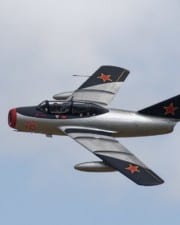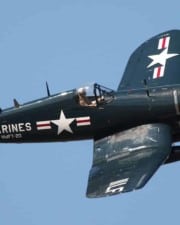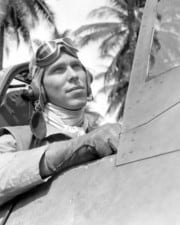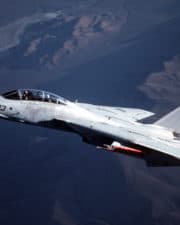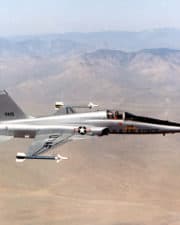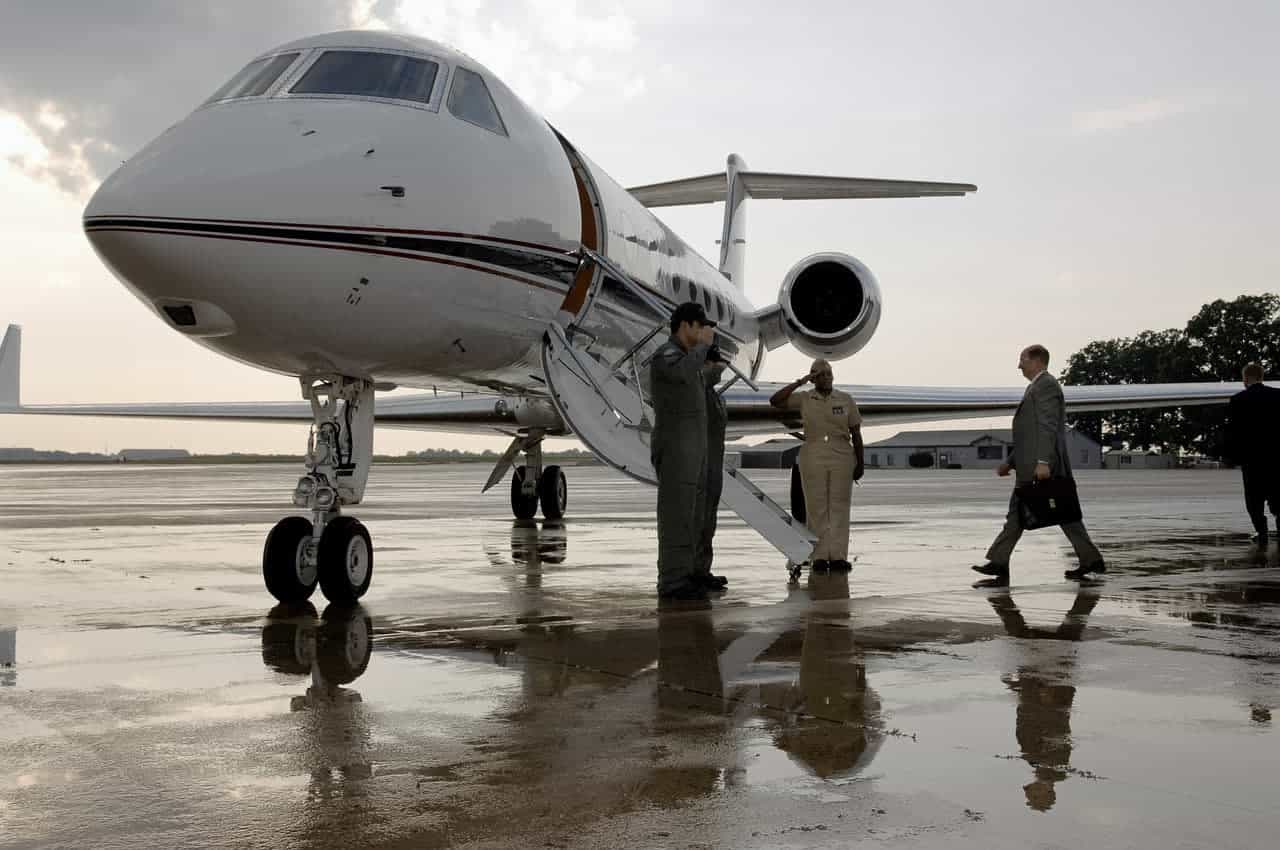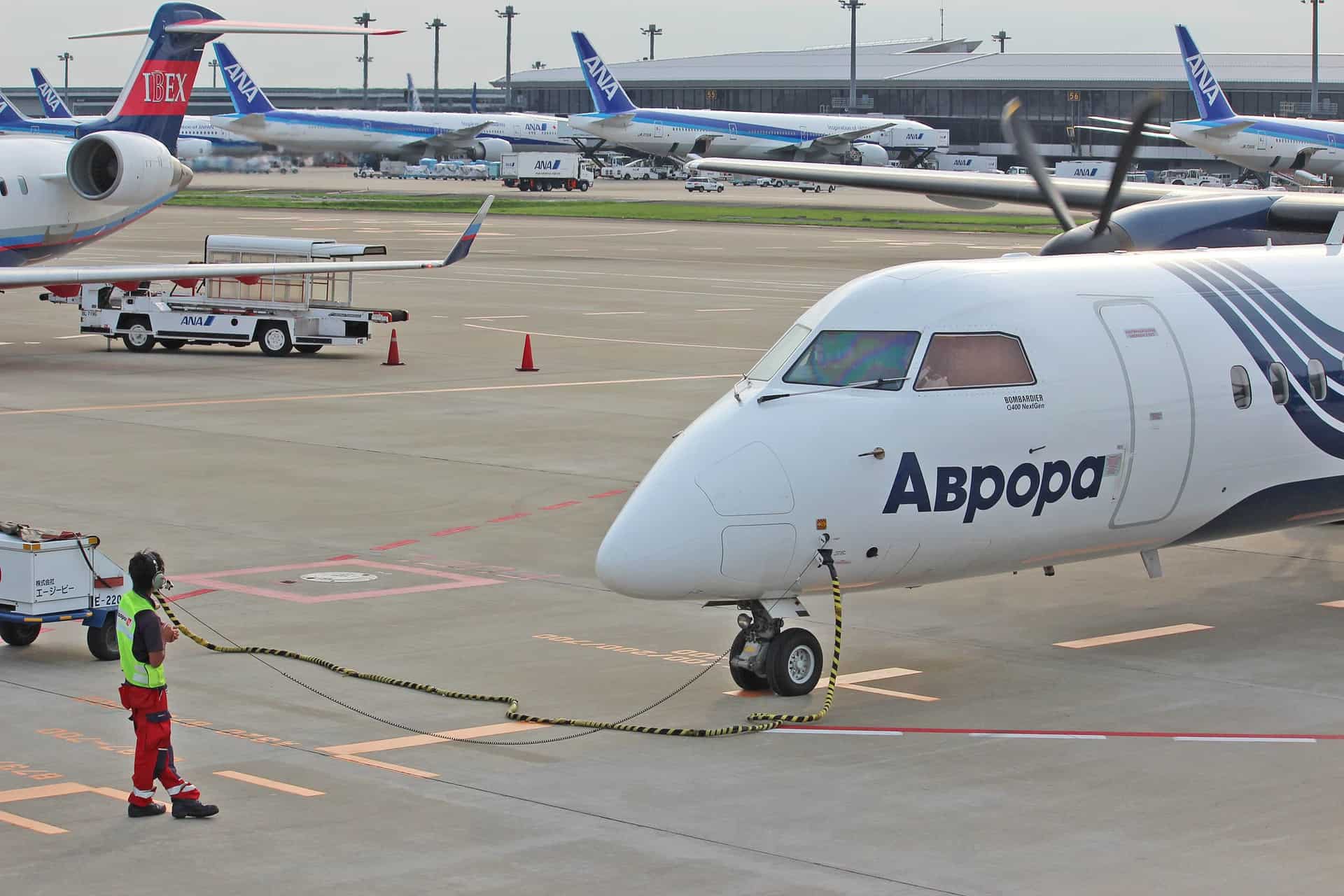Vietnam saw some of the most famous fighter jets and dogfights in the history of modern warfare. These jets defined the conflict that defined a generation.
The air war in Vietnam was as sprawling as it was vicious, leading to some of the worst destruction caused by aircraft in the 20th century. Battles were fierce, casualties were high, and things such as napalm and Agent Orange ravaged the Vietnamese countryside.
In the case of the latter, Agent Orange dropped by US aircraft has caused generations of birth defects and still affects the Vietnamese environment today.
In the case of the former, casualties of combined Navy and Air Force personnel topped 5,000. Aerial campaigns such as the notorious Operation Rolling Thunder lead to immense casualties, and often without objectives being achieved.
The leaders and governments responsible for the tragedy in Vietnam do not dull the valor of those who gave their lives for their countries – even if they deserved better from them.
In this article we take a look at the fighter jets that were active in the Vietnam war on both sides. US-made fighter jets on the American and South-Vietnam side, and Russian-made fighters on the North-Vietnamese or Vietcong side of the conflict.
Table of Contents
1. Douglas A-4 Skyhawk

One of the US Navy and Marine Corps’ primary planes at the outset of the Vietnam War, the Skyhawk, also saw extensive use in the Yom Kippur War on the Israeli side and the Falkland Islands War on the Argentinian Side.
The Skyhawk was a speedy lightweight fighter, and saw some of the first aerial combat missions of the war. The late Senator John McCain flew a Skyhawk and was shot down, becoming a POW, as did Everett Alvarez, whose captivity through 1973 was among the longest on the American side.
The Skyhawk measured 40 ft 1.5 in., was powered by 1×Pratt & Whitney J52-P-6A turbojet engine to a maximum speed of 673 mph, had a range of 1,160 mi, and could be armed with ×20 mm Colt Mk 12 cannons and several air-to-air and air-to-surface missiles, including AIM-9 Sidewinders, and bombs.
2. LTV A-7 Corsair II

When the US Armed Forces began to try to replace the Skyhawk, one of the first fighters they rolled out was the Corsair II. The Army required a fighter that could provide more close air support than the general purpose subsonic jets the Air Force preferred, resulting in the Corsair II’s usage.
Prototypes were first flown in 1968, and entered service in the final stages of the Vietnam War. They were noted for their speed and ground attack capability while operating in the 354th Tactical Fighter Wing while based at Korat Royal Thai Air Force Base in Thailand.
The Corsair II had a cruising speed of 545 mph and maximum speed of 663 mph, was powered by 1xAllison TF41 turbofan engine, had a range of 3,044 mi, was 46 ft 1 in. long, and was armed with 1xM61A1 20 mm rapid-fire cannon.
3. McDonnell Douglas F-4 Phantom II
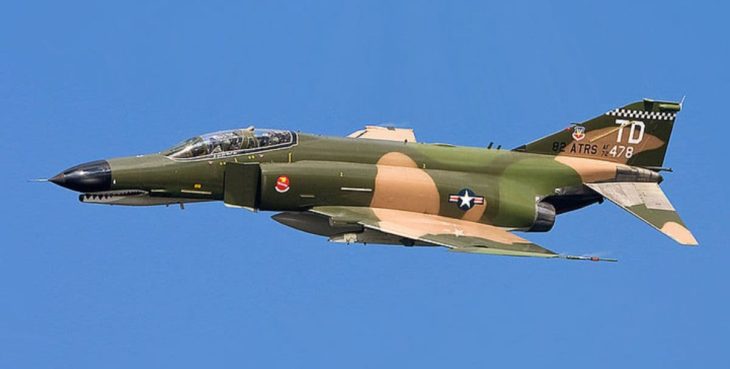
The duel between Phantom IIs and MiG-21s helped characterize Vietnam’s aerial combat, with both sides claiming victory. The United States claimed a favorable kill ratio, and the North Vietnamese side did the same, with both sets of statistics demonstrating just how uncertain yet deadly the aerial war could be.
The USAF, Navy, and Marine Corps all operated Phantom IIs during the Vietnam War. Despite its impressive firepower, state of the art radar, and fantastic speed, the MiG-21s matched up well against it. By war’s end, it was remembered fondly by some and as a “clumsy bruiser” by others.
The Phantom II measured 63 ft, had a cruising speed of 580 mph and maximum speed of 1711 mph, and could be armed with 1×20 mm M61A1 Vulcan cannon, and several air-to-air and air-to-ground missiles and bombs, including Sidewinder and Sparrow varieties.
4. Republic F-105 Thunderchief

One of the best-equipped fighters early in the war, the Thunderchief was able to carry twice as large a payload as fighters on the North Vietnamese side. They were a key part of Operation Rolling Thunder, trying but failing to halt vital supplies along the Ho Chi Minh Trail.
The Thunderchief was prey just as often as it was a predator, however, if not more so, with MiG-17s and MiG-21s posting superb one-on-one records against it, with the Vietnam People’s Air Force claiming to have successfully downed 14 Thunderchiefs in December 1966 with no losses.
The Thunderchief measured 64 ft 4.75 in., featured 1×Pratt & Whitney J75-P-19W afterburning turbojet engine powering it to a maximum speed of 1,390 mph, and was armed with 1×20 mm M61A1 Vulcan 6-barreled Gatling cannon, LAU-32/LAU-59 rockets, and several air-to-air and air-to-surface missiles and bombs, including Sidewinders.
5. Vought F-8 Crusader
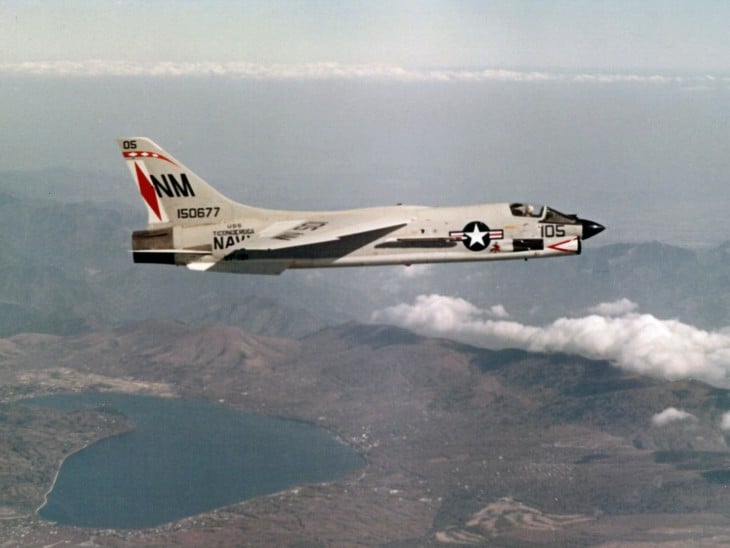
Nicknamed “The Last of the Gunfighters” as it was the last USAF fighter jet to be armed primarily with guns, the Crusader was used by the US Navy and Marine Corps as well as the French Navy. They were among the first US aircraft to serve in the war.
April 1965 saw some of the first air battles between the US Navy and the Vietnam People’s Air Force, with Crusaders front and center. Seventy-six of the roughly 166 Crusaders lost during the war were due to accidents, with surface-to-air missiles accounting for more combat losses than dogfighting losses to MiGs.
The Crusader measured 55 ft 11.6 in. long, could reach speeds of 1,227 mph, had a combat range of 453 mi, and in addition to its guns could carry LAU-10 rocket pods, Sidewinder missiles, and various amounts of Mark 81/82/83/84 bombs.
6. Northrop F-5 Tiger II

Used first by the USAF and then the South Vietnamese Air Force after the United States donated them, the F-5 was one of the more versatile aircraft in the early stages of the war. The 3rd Tactical Fighter Wing of the USAF flew the F-5, operating from Bien Hoa Air Base.
After flying these planes from April 1966 to April 1967, the remaining F-5s were turned over to the South Vietnamese. When South Vietnam fell, more than 100 F-5s were captured, with the Soviet Union receiving some, and an F-5 remains on display at the Polish Aviation Museum.
The F-5 measured 48 ft 2.25 in., could reach speeds of 1,080 mph, and were armed with 2×20 mm M39A2 Revolver cannons, with 280 rounds per cannon, and could carry several different kinds of rocket pods, Sidewinder and Maverick missiles, and Mark 80 series bombs.
7. Mikoyan-Gurevich MiG-15
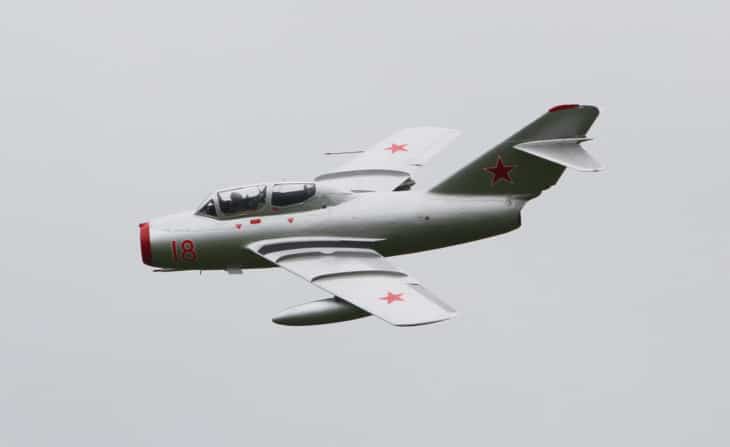
The MiGs are by far one of the most famous lines of Russian jet fighters of all-time, and is likewise one of the most produced jet fighters with more than 13,000 manufactured. Created by the Soviet Union, they saw extensive use during the war on the North Vietnamese side.
Used extensively in the Korean War, MiG-15s were only used for training purposes during the Vietnam War, and there is no record of them being used in combat. However, due to the fact the North Vietnamese Air Force was forced to start from scratch, that training was nevertheless essential.
The MiG-15 was 33 ft 1 in. long, could reach a maximum speed of 669 mph, had a cruising speed of 530 mph, and was armed with 2×23 mm Nudelman-Rikhter NR-23 autocannons, with 80 rounds per canon, and 1×37 mm Nudelman N-37 autocannon with 40 rounds.
8. Mikoyan-Gurevich MiG-17
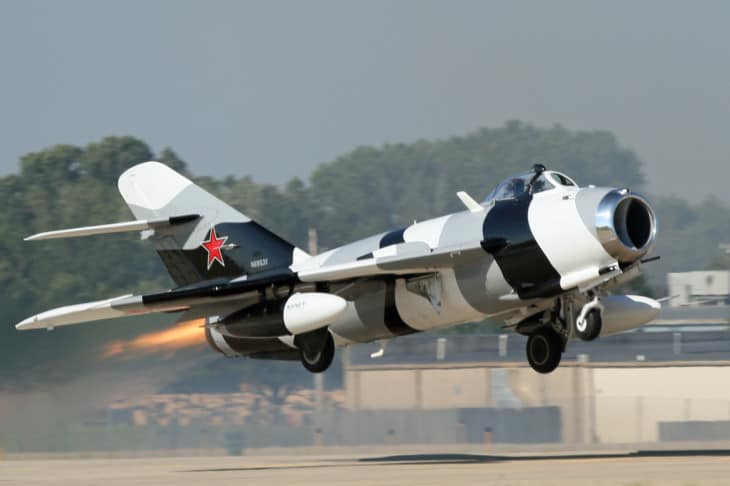
Earning the nickname “Fresco” from NATO pilots, this installment in the MiG line added more speed and firepower to the North Vietnamese Air Force from the start of the war courtesy of Soviet shipments. They were involved in sorties with USAF planes throughout the early to mid-60s.
Combat between the MiG-17 and US planes included attempts by the latter to attack Thanh Hóa Bridge by Thunderchiefs. The MiG-17s played a key role in defending the bridge and maintaining North Vietnamese control of the area, with battles between it and US aircraft raging throughout the war.
The MiG-17 measured 36 ft 11 in. long, could reach a maximum speed of 680 mph, a range of 1,260 mi, and were armed with 2×23 mm Nudelman-Rikhter NR-23 autocannons, 80 rounds per cannon, 1×37 mm Nudelman N-37 autocannon, 2×UB-16-57 rocket pods, and bombs.
9. Mikoyan-Gurevich MiG-19
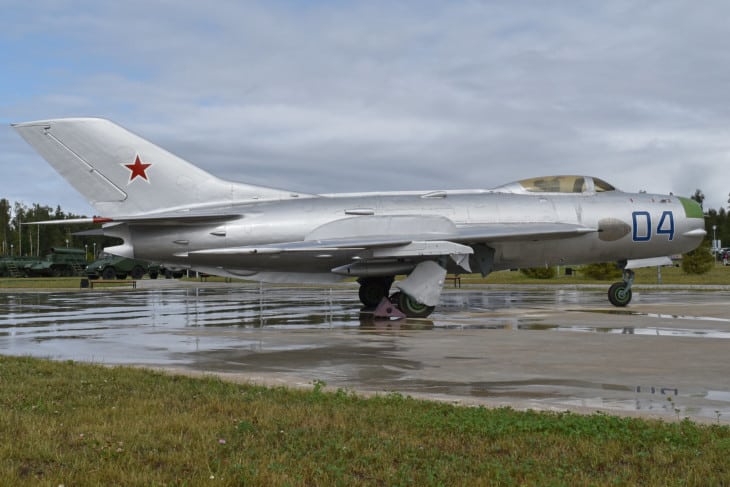
The first-ever mass produced supersonic aircraft, the MiG-19 was yet another craft the North Vietnamese government decided to purchase from the Soviet Union in an attempt to bolster their air defenses. The MiG-19 ended up being a part of the third North Vietnamese fighter unit, the 925th Fighter Regiment.
However, the MiG-19 had a very short range, making it hard for them to keep up with US pilots. It saw a lot of action versus the F-4 Phantom II on the US side with mixed success at best, setting the stage for their eventual replacement by the MiG-21s.
The MiG-19 measured 41 ft 2 in., could reach a maximum speed while powered by 2×Tumansky RD-9B afterburning turbojet engines, and were armed with 3×30 mm Nudelman-Rikhter NR-30 autocannons, 2×32-round ORO-57K rocket pods, and 2xFAB-250.
10. Mikoyan-Gurevich MiG-21

The MiG-21 was a welcome replacement for the MiG-19, which, as mentioned, did not perform as well versus the Phantom IIs. It also gave the Indian/Bangladeshi side a crucial aerial advantage over Pakistan during the Bangladesh Liberation War, which was the first on the Indian subcontinent to feature supersonic aircraft.
In Vietnam, they comprised North Vietnam’s fourth and final fighter wing, the 927th Fighter Regiment. It was effective at downing Thunderchiefs and in matchups against the F-4 Phantom II enjoyed even better than a 1:1 kill ratio.
The MiG-21 had 48 ft 3 in., a 1×Tumansky R-25-300 afterburning turbojet powering the jet to speeds of 1,351 mph, and was armed with 1×internal 23 mm Gryazev-Shipunov GSh-23L autocannon, 4×UB-16-57 rocket pods, K-13, R-55, and R-60 air-to-air missiles, and bombs.
Related Posts



